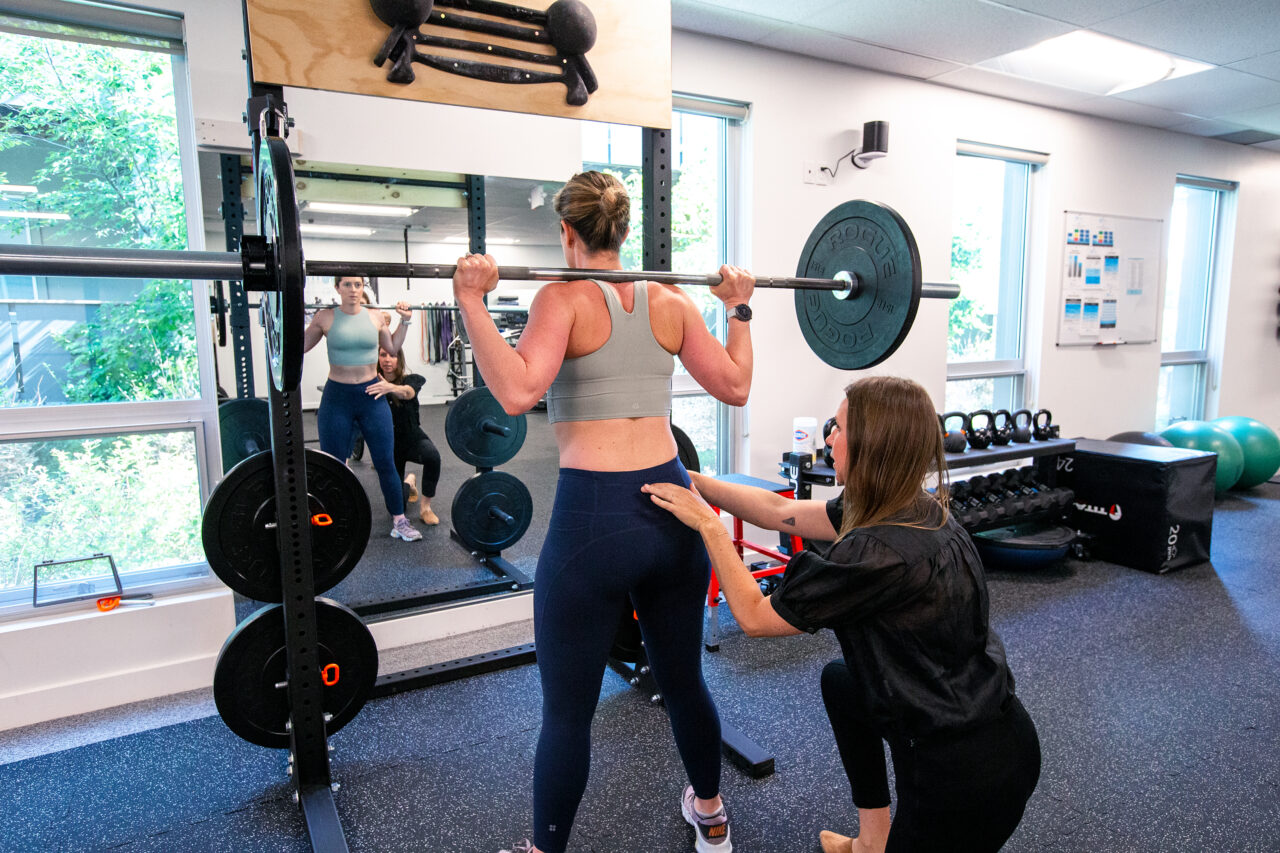Whether you’re cycling through deadlifts in a WOD or chasing PRs with heavy back squats, one of the most overlooked — yet critical — components for female athletes is the pelvic floor.
More than just “private” muscles, the pelvic floor plays a key role in core stability, breathing mechanics, and load transfer. Learning to connect with this system can help you lift stronger, reduce injury risk, and avoid symptoms like leaking or pelvic heaviness.
Here’s how to build pelvic floor awareness directly into your lifts — and train smarter from the inside out.
Research-Backed Cues For Engagement
A 2011 study in the International Urogynecology Journal used real-time ultrasound to evaluate
verbal cues for pelvic floor muscle (PFM) activation. It found posterior-focused cues (like “squeeze around the anus”) to be more effective than anterior ones (such as “stop the flow of urine”).
The takeaway? Specificity matters — especially when you’re under a barbell.
Why Your Pelvic Floor Matters
Your pelvic floor:
- Stabilizes your pelvis and spine
- Coordinates with the breath to manage intra-abdominal pressure
- Supports pelvic organs (bladder, uterus, rectum)
- Helps prevent leaking or pelvic heaviness during heavy lifts or high-impact movement
In fact, stress urinary incontinence (SUI) — the involuntary leakage of urine during exertion like lifting, jumping, or sneezing — affects an estimated 1 in 3 women, including many elite athletes. It’s common in CrossFit, but it’s not something you have to just live with.
It’s not just about doing Kegels — it’s about timing, breath, and integration.
Cues You Can Actually Use
Everyone responds to cues differently — find what resonates for you. Here are some commonly effective options:
Engagement Cues
- “Sip a smoothie through a straw with your vagina.”
- “Draw your sit bones together and lift.”
- “Pick up a blueberry with your vagina.”
- “Stop the urine stream.” (Anterior wall)
- “Hold in the gas.” (Posterior wall)
Relaxation Cues (Equally important!)
- “Let your pelvic floor bloom like a flower.”
- “Drop the hammock.”
- “Lower the elevator to the ground floor.”
Train both contraction and relaxation. Just like any other muscle group, balance matters.
Squat: Step-by-Step Pelvic Floor Integration
Setup
- Feet shoulder-width or slightly wider, toes slightly out
- Take 360° breaths: inhale into ribs, belly, and pelvis; exhale, gently lift pelvic floor
- Cue: “Breathe down and out — lift up and in.”
Descent (Eccentric)
- Inhale as you lower
- Allow the pelvic floor to expand with the breath
- Cue: “Inhale and let your pelvic floor bloom.”
Ascent (Concentric)
- Begin exhaling before the lift
- Gently engage the pelvic floor as you drive up
- Cue: “Exhale and lift — from pelvic floor to crown of your head.”
- Top Position
- Reset your breath, ribs over pelvis
- Avoid unnecessary bracing or breath-holding unless coached for max effort
Deadlift: Step-by-Step Pelvic Floor Integration
Setup
- Feet hip-width, bar over mid-foot
- Hinge at hips, brace your core
- Inhale at the bottom; allow the pelvic floor to lengthen
- Cue: “Create space in your pelvic bowl.”
Pull(Concentric)
- Exhale as you initiate the lift
- Engage the pelvic floor first, then lift the bar
- Cue: “Lift from the floor — pelvic floor first, then the bar.”
Lowering (Eccentric)
- Inhale as you hinge down
- Let the pelvic floor soften and relax
- Cue: “Let your breath guide you down.”
Red Flags to Watch For
You might benefit from pelvic floor physical therapy if you notice:
- Leaking urine during lifts, sneezing, or double unders (common signs of SUI)
- A heavy or bulging sensation in the vagina
- Urgency to urinate during workouts
- Persistent low back, hip, or SI joint discomfort despite solid lifting form
These symptoms are common, but not normal. They’re signs your system is asking for help.
Final Thoughts: Core Strength Starts Deep
In CrossFit, we’re taught to “brace the core” — but real bracing starts at the foundation. Working with your breath and pelvic floor bridges the gap between raw strength and long-term resilience.
This isn’t about lifting less — it’s about lifting smarter. Need Help Dialing It In?
We get the demands of barbell sports. At Mend Physical Therapy, our pelvic health specialists can help you connect with your pelvic floor in a way that’s functional, personalized, and performance-minded.
Stay strong, leak-free, and confident — from the gym floor to the competition floor.
Click Here to schedule your next appointment with the experts at MEND

